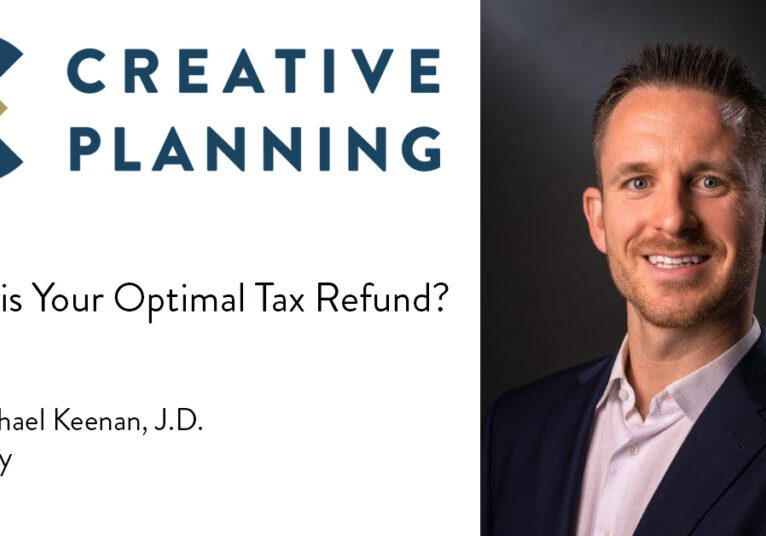Neither owing nor owed is ideal come April 15th
Filing taxes this year was a rude awakening for many people who got to the end of their 1040s only to find they were getting a smaller than expected refund or even had an outstanding tax liability. Cries of “But what about the tax cut?” and “I thought my taxes were supposed to go down this year!” rang out across the country as taxpayers who were used to refunds were blindsided by how changes in income tax laws and tax withholding formulas affected both how much they paid and the size of their refund.
But, it hasn’t always been this way. If you’re reading this, chances are you’ve never known any other system of income taxes than the current method of withholding estimated taxes from your paycheck and then receiving a refund of the excess or paying the balance when you file. However, it hasn’t always been this way. From the time the modern federal income tax was instituted in 1914 until the Current Tax Payment Act of 1943, taxpayers simply filed their income tax return after the close of the year and wrote the IRS a large check for their entire tax liability for the entire year.
Can you imagine not only having to write a single check for your entire tax liability, but also having to estimate how much you’ll owe throughout the year so that you can set aside enough to make that lump sum payment?
How Tax Withholding Works
Each paycheck, your employer uses the information you’ve provided on your Form W-4 – namely, your filing status and the number of withholding allowances you claim1 – to determine how much to withhold for taxes. For 2019, each allowance you claim reduces your income subject to withholding by $4,200 over the course of the year. So, the more allowances you claim, the smaller the amount of money withheld from each of your paychecks for federal income taxes. But, if you don’t have enough withheld, you’ll owe the balance – and if you don’t meet one of the minimum withholding safe harbors, potential additional interest and penalties – when you file your tax return.
The size of your tax refund doesn’t tell you whether you paid more or less in income taxes for the year. Instead, it just means the amount you paid, either through withholding or estimated tax payments, plus your tax credits, exceeds your tax liability. If you owe taxes, it just means your tax liability exceeded the amount paid in during the year. It’s completely possible to pay less in taxes but receive a much smaller refund – or even owe taxes.
For example, say that during 2017, your employer withheld $8,000 for income taxes but your total tax liability for the year is only $6,500. When you file your tax return, you would receive a $1,500 refund. Then, in 2018, your employer withheld $5,000 for income taxes but your total tax liability for the year is $5,500, you would owe $500 when you file your tax return.
Reasons for Underwithholding
Common reasons for underwithholding during the year include:
- Changes in your life circumstances, such as getting married or divorced, having children, or starting a new job.
- Additional income from sources not subject to withholding, such as interest, dividends, and capital gains. For example, if you sell stock that your parents gave you years ago, you could have a substantial taxable gain and you wouldn’t have any money withheld from the proceeds for taxes.
- Changes in the tax deductions or credits you are eligible to claim. For example, a substantial change for 2018 was the doubling of the standard deduction, along with the capping of state and local taxes at $10,000. For many taxpayers, this meant they received a larger deduction overall, but because the change in the standard deduction was already incorporated into the withholding formula, it resulted in slightly larger take home pay each pay period throughout the year, but a small refund when filing your return.
Is a Large Tax Refund Beneficial?
From a pure numbers perspective, you should want to pay in the absolute minimum in withholding during the year so that you avoid making an interest-free loan to Uncle Sam. But, if you have trouble resisting dipping into money you want to set aside for long-term goals, you can always update your W-4 to request that a flat additional dollar amount be withheld from each paycheck. That way, you won’t have access to the money until you get it all in a lump sum when you file your income tax return.
However, if you can avoid the temptation to raid your savings from time to time, using extra withholding to stash money away isn’t your best option.
- You don’t earn any return on the money while the IRS holds it during the year. While you may not want to take on the risk of market fluctuations during the year, putting it in a bank account can at least earn some interest on the money.
- If you have a true emergency, you can’t access the money you’ve paid in tax withholding during the year. If you don’t have other funds to avoid going into debt, such as carrying a balance on your credit card, you’ll be paying a high interest rate to your credit card company while the IRS isn’t paying you anything for the money that’s been withheld.
Using Mental Accounting to Make Saving Easier
The theory of mental accounting proposes that people classify and spend money differently even though all money is worth the same. For example, think about how you feel about spending money from your regular paycheck versus a gift card a friend gave you as a present or a bonus from your employer. If you’re like most people, the cost of your favorite guilty pleasure – whether it’s a pair of new shoes, a night out, or something else – is much easier to justify when you’re using a gift or bonus to pay for it versus a portion of your paycheck, even though the actual cost is exactly the same.
The same theory applies to how many people think about paying taxes and receiving a tax refund. Often, “taxes” aren’t even an expense that registers in your mind because you usually don’t have to write a check to pay them – the money is already taken out before they get their paycheck so it doesn’t feel the same as if they had received all their wages and then had to write a check back to the government. Then, when they receive a tax refund, it feels like a bonus or gift.
If you like the feeling of getting a tax refund because it feels like a gift or bonus, consider setting up a separate savings account that you can deposit a certain amount from each paycheck in each paycheck. You can even give it a nickname, like “Surprise Tax Refund.” That way, when you look at your usual bank account balance, you won’t feel like you have more to spend than you actually do. The extra step of having to transfer money between accounts before you can use it could be enough to discourage raiding your savings for a frivolous purchase.
If your employer directly deposits your paychecks, you can request that a certain amount, such as $50 or $100 per paycheck, be deposited into a separate savings account that you think of as an emergency fund. Then, the rest can be deposited into your usual account. That way, you never have to transfer the money out of your main bank account so you’re less tempted to spend it instead of saving it and you don’t have to remember to transfer a portion of your paycheck to a different account every time you get paid.
Using mental accounting to fortify your financial plan isn’t limited to your tax planning: Depositing money in different accounts right when you get your paycheck (or even using the envelope system where you put amounts you’ve budgeted for different categories of expenses in different envelopes) can help you reach a range of financial goals.
Next Steps
If you didn’t get the refund you were wanting when you filed your tax return, you can adjust your withholding at any time by filing a new Form W-4. Working with a Wealth Manager can help you put systems in place to help you save throughout the year so you’re not relying on a tax refund to make ends meet. Even better, working with a team of professionals that can offer comprehensive financial planning as well as tax planning, like the professionals at Creative Planning, can help you anticipate what your tax liability will be – regardless of changes in the withholding formulas – so that you can sleep well knowing your financial well-being isn’t dependent on the U.S. Treasury not tinkering with the tax withholding formulas.
Footnote:
- If you elected to have an additional amount withheld from each paycheck, that will also affect your withholding.



